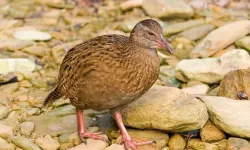Dutch biologist Freek Vonk is seen swimming with a 20-meter-long, 200-pound giant green anaconda. It was previously thought that only one species of green anaconda, Eunectes murinus, existed in the wild, but a paper published this month in the scientific journal Diversity said the new "northern green anaconda" was a new species called Eunectes akiyama.
"Our goal was to use anacondas as indicators of what kind of damage is being done by the oil spills that are plaguing the Yasunis in Ecuador, because oil drilling is definitely out of control," said researcher Bryan G. Fry.
Fry, an Australian biology professor at the University of Queensland who has been researching anaconda species in South America for almost 20 years, told Reuters the discovery allowed them to show that the two species diverged about 10 million years ago.
"But the really surprising part was that despite these genetic differences and long-lasting differences, the two animals were exactly the same," Fry said.
Although green anaconda snakes are visually very similar, the 5.5 percent genetic difference surprised scientists.
"That's an incredible amount of genetic variation, especially considering we're only 2 percent different from chimpanzees," Fry said.
Fry said anacondas are incredibly useful sources of information about the ecological health of the region and the potential effects of the oil spill on human health.Some of the snakes they studied in parts of Ecuador were heavily contaminated by the oil spill, Fry said, adding that anacondas and arapaima fish accumulate large amounts of petrochemical metals.















